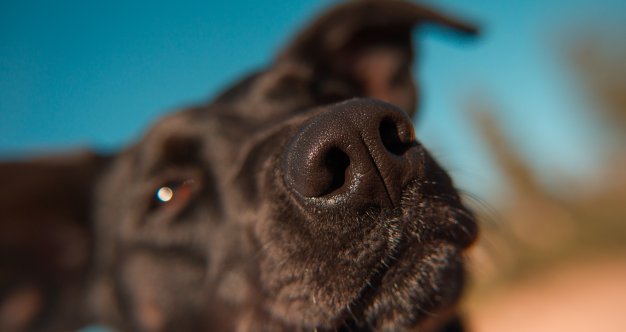It’s wonderful to think that your beloved family pet may be able to alert you to cancer of which you were previously unaware, but science hasn’t proven that it’s possible yet. And while the many stories that go viral in which owners swear their pets sniffed out their underlying diseasesuch as that of a little boy named Luke and his black Labrador Retrieverare anecdotal at best, there is medical evidence to support that disease and scent are certainly linked.
It is harnessing knowledge of these smells, rather than training pets to detect illness, that holds promise for the future of cancer research. One study published in the BMJ found that, “…specific cancer scent does indeed exist and that cancer-specific chemical compounds may be circulating throughout the body.” And though the study stops far short of concluding that animals should be employed as early detectors of such diseases, it does recommend examination of these compounds to learn more about how to capitalize on the smell of cancer.
Read MoreSpeaking to their local NBC affiliate KGW8, Michelle says, "My husband and I were lying in bed watching TV, when out of nowhere, Mia got up on my chest, sniffed my right breast and looked in my face. She sniffed the spot again and looked at my face and I tried to shove her off. She came back up and just laid down on that right breast and looked at me like, 'I’m trying to tell you something.'" Will felt the lump himself and encouraged his wife to get checked out, and soon Michelle received the Stage 2 breast cancer diagnosis from her doctor.
Since early detection was the key to Michelle’s good prognosis, she is reminding those who are touched by her story to stay on top of their screening. The best way to do that is to follow recommendations on breast cancer screening and mammograms.
There is, however, some disagreement within the medical community on what, exactly, such guidelines are. While some doctors insist that women should begin yearly mammograms at the age of 40, others aren't convinced. The American Cancer Society lists such screenings between the ages of 40 and 44 as a personal choice, and Dr. Connie Lehman, Chief of the Breast Imaging Clinic at Massachusetts General Hospital and professor of Radiology at Harvard Medical School, tells SurvivorNet that at the very least, all women should be getting annual mammograms starting at the age of 45; beginning at 55, women can choose if they will continue with yearly mammograms or switch to getting them every two years, instead. (If there is a family history of breast cancer, high-risk gene mutations like BRCA1 or BRCA2 or a history of radiation to the chest, she caveats, screening should begin as young as 30.)
Even further, it's important to know that a standard mammogram may not suit all women. For example, Dr. Lehman says, if you have dense breasts, a 3D mammogram facility may be your best bet. As always, it's wise to discuss all options with your doctor to choose the exam that's right for you and how often to get them.
Learn more about SurvivorNet's rigorous medical review process.


